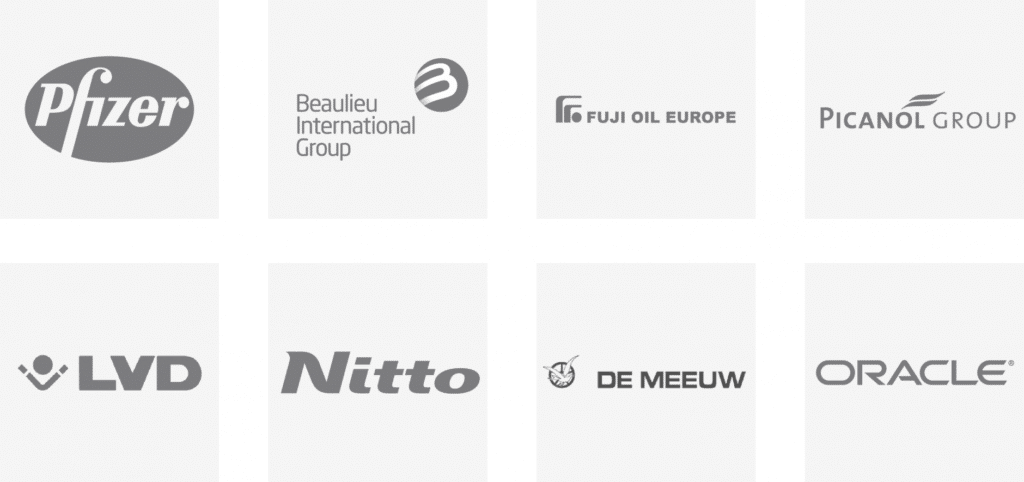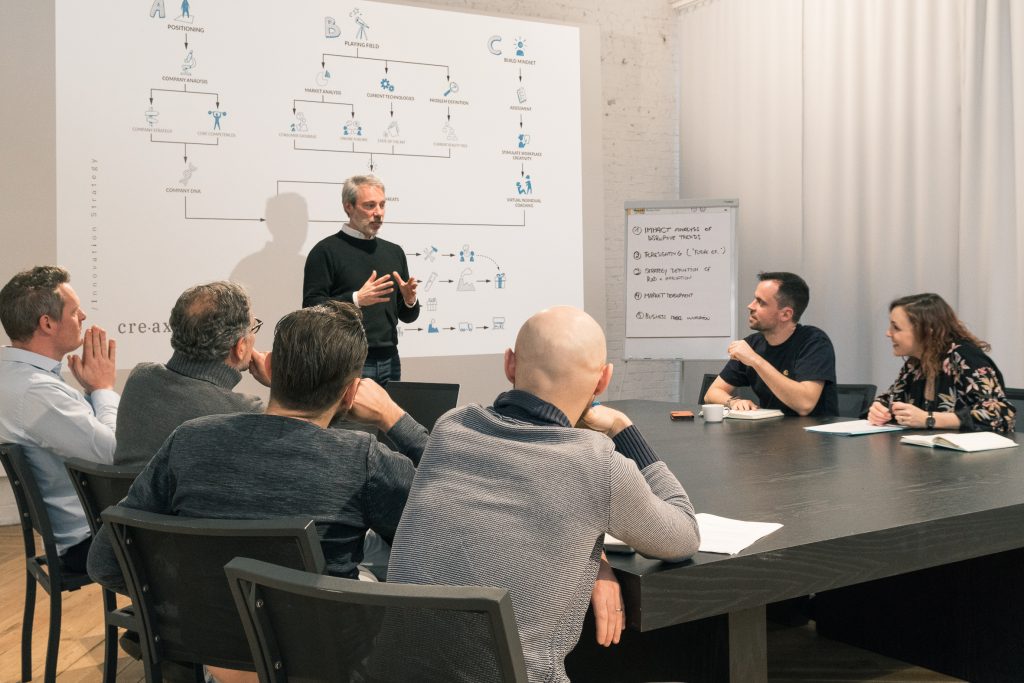Leveraging open innovation: 6 key insights from our Innovation Roundtable
- November 24, 2016
Our first Innovation Roundtable showed that an informal discussion between R&D professionals from diverse industries creates the perfect platform for knowledge sharing. That’s why we gave it a second go. On November 18th, CREAX gathered a small group of innovation enthusiasts to exchange insights and best practices. Hot topic of the day: open innovation. What did the conversation boil down to? These are the six main takeaways.
At its core, open innovation seems like a pretty straightforward idea. Firms can and should use external as well as internal ideas to advance their products, business models or operational processes. Still, leveraging external sources of innovation remains challenging for a lot of companies. In most cases, obtaining external ideas is not the biggest problem. The real challenges are integration, commercialization and the interaction between the firm and its collaborators. Starting from a theoretical framework for inbound innovation projects , we wanted to know more about how R&D professionals deal with the essential steps towards open innovation success.
People from these companies joined us for a lively debate:

6 key insights
1. Open innovation is a mindset
While there is an abundance of theories about how companies can profit from open innovation, the importance of willingness is often overlooked. The so-called ‘not invented here syndrome’ can seriously hamper with the integration of suitable external solutions.
In order to shake off this reluctance, it has to be understood company-wide that keeping innovation in-house is inefficient. Open innovation needs to become part of the company DNA and in some cases, that requires fundamental cultural changes.
2. A minimum of internal R&D is indispensable
In order to profit from open innovation, firms need to engage in a minimum of internal R&D – for two reasons. First of all, you’ll need to bring something to the table if you want to take part in projects with external partners. Open innovation involves giving and taking, so building up internal expertise is key. Secondly, once external knowledge and technologies have been identified, you’ll have to match them with internal capabilities. Successful integration depends on it.
3. Look beyond industrial partners
Valuable ideas can be found through multiple partnerships. If we cast a wider net around open innovation, it is about much more than just strategic collaborations among industrial players. Projects set up with suppliers, universities or research institutes can be just as valuable. Even business ecosystems or crowdsourcing initiatives are possible sources. The key is to create non-routine innovation processes that allow the matching of external and internal expertise.
4. Good agreements make good projects
This might sound obvious, but it cannot be stressed enough. The success of open innovation projects strongly depends on the quality of the agreements that were made beforehand. In a lot of cases, the parties that join forces don’t know each other very well.
Following a clear process is imperative to avoiding misunderstandings or disputes further down the road. Basic questions that require careful attention include:
- What is the exact scope of the project?
- How will it be organized?
- Who is contributing what?
- What does each party hope to get out of this project?
- How will the results be valorized and commercialized?
Setting up a detailed contract takes time because multiple scenarios have to be taken into account. But it’s well worth the effort: once you have gone through the entire process, subsequent contract discussions – for other open innovation projects – are likely to go much more smoothly.
5. Focus on collective goals
Although a solid contract is vital, it is not the silver bullet. Trust and openness remain important, especially in the early stages of a project. Too many clauses, confidentiality claims and nondisclosure agreements can kill a collaboration before it has even started. Get to know each other before you put pen to paper. Make sure all parties have complementary interests and see if the corporate cultures match. While all parties want to get value from an open innovation project, the focus should be on collective goals.
6. Think twice about exclusivity clauses
When the results of a project start to emerge, exclusivity clauses are just around the corner. However, too many restrictions in the commercialization phase can also have negative effects. The question is this: do you want to claim a market segment or do you want the market to grow? Overprotecting innovation can have a paralyzing effect on the latter. If you’re active in an emerging market, your competitor may even be your best ally. As one attendee said it: without exclusivity clauses, the electric car market would have grown a lot faster.
Join our next innovation roundtable
We’ll set up new roundtables in the coming months, so let us know if you’d like to pull up a chair and join us!










